Danmuji is a yellow pickled radish Korean style that originates from the Japanese Takuan but has a crunchier texture and a slightly sweeter taste, making it a perfect pairing with Korean or Korean Chinese food. So make it at home!

What is Danmuji 단무지?
Danmuji 단무지 is a Korean style pickled radish that’s crunchy, sweet and slightly tangy, most often served with Korean bunsik dishes like Tteokbokki, Ramyeon, Yachae Twigim, Curry Rice, Omurice and Korean Chinese dishes like Jjajangmyeon and Mandu. It’s also a must ingredient in Gimbap – in this case, it’s cut into long strips not round slices like here.
How exactly the Danmuji came about is not clear, but what everyone seems to agree is that it became more widely consumed after the Japanese rule in the early 1900’s. And some say it’s a Koreanized version of the Japanese Dakwang while others say there were versions of Danmuji in Korea before the 1900’s. Well, all I know is that when I was little, this was mostly called Dakwang or Takuan which is the name of the Japanese pickled radish.
But it’s interesting to note that the way the most common version of Takuan is made is very different and thus the taste and texture is different from Danmuji. The Japanese radish pickle is usually left to ferment in rice husks and salt until the radish comes out salt forward, slightly sweet and not very tangy (which I also love) while the Korean Danmuji is less salty, sweeter and more tangy than Takuan. Texture and appearance wise, they are different too – Takuan is slightly chewy, crunchy and has a shriveled wrinkly look while Korean Danmuji is more crunchy and not any extra chewy.
Another fun fact is that this is a must-have condiment for Korean Chinese foods!? How funny is that??
A Koreanized Japanese pickle that is an absolute must on the Korean Chinese table?? I think it just goes to show you that no one cuisine stands alone by itself. We are all influenced by each other and each of our cuisines are all better for it.
Why I make Danmuji at home
I don’t know if you noticed but if you ever buy the Danmuji at the grocery store, almost all of them used to be made with saccharin which always came with a cancer warning label. More recently, they stopped using saccharin and now make it with aspartame, which I guess is better but I just don’t like artificial sweeteners and food colorings so I think it’s better to make it at home.
INGREDIENTS YOU WILL NEED to make Danmuji
- Daikon Radish – Daikon radish will work best for Danmuji but you can also use Korean radish – just try to buy ones that are not too thick/fat. But if you can’t get a skinnier one, don’t worry, you can just cut into quarters. Buy radishes that feel smooth, without too many blemishes. The picture below is actually of a Daikon radish that’s not in the most fresh state. Try to buy ones that are smoother and cleaner looking than this one. 🙂 WHERE TO BUY? You can buy Daikon radish in Asian or Korean grocery stores and most regular grocery stores.
- Gardenia Fruit (Chija 치자) – I use Chija 치자 pods to color my Danmuji yellow. Chija is the seed pod of Gardenia flowers, which goes by Gardenia Fruit. Traditionally, Koreans used Chija as a natural yellow food coloring. You can also use Chija powder if you can’t get the fruit itself. A substitute for Chija is turmeric powder but use it sparingly as unlike Chija, turmeric adds a bit of its flavor. WHERE TO BUY? You can buy gardenia fruit from Amazon HERE.
- Sea Salt – the best salt to use is Korean Cheoilyeom sea salt because it has the best flavor with minimum bitterness. But if you can’t get Cheonilyeom sea salt, you can use the common sea salt or pickling salt. But be sure to reduce the amount used as Korean sea salt is less salty than other salts. You can read all about my post comparing 12 different salts for Kimchi HERE.
- Sugar – I like using organic unbleached sugar but feel free to use whatever sugar or even sugar substitutes.
- Rice Vinegar – rice vinegar is what I like to use but you can use plain white vinegar if you’d like.
STEP BY STEP INSTRUCTIONS
- Clean and sanitize pickling jar by washing with soap, rinsing and boiling in a hot pot of water. If you are going to keep it in your fridge, you may skip the boiling part but just use a dishwasher to clean your jar.
- Clean radish and brush the outer skin with a vegetable brush if the radish is fresh and clean enough to use the skin. If the skin is blemished or has black spots, you can peel those blemished areas but try to keep as much skin as possible.
- Cut radish into logs or slice thinly (1/4″ thickness) into discs.
- Put radish and gardenia fruit into the jar. Try to put the gardenia fruit towards the bottom of the jar because if it stays floating on top, it may not color the radishes evenly.
- Make pickling juice – In a small pot, mix water, sea salt, sugar, rice vinegar and simmer until all sugar and salt is dissolved. Stir a few times with a spoon to help it dissolve. Once fully dissolved and bubbling a bit, remove pickling liquid from heat and pour hot liquid into the jar directly with radishes in them.
- Leave it in the jar for about a week in the fridge until radish looks slightly wrinkly and yellow. You should also swirl the content in the jar a couple times throughout the week so the gardenia fruit colors the radishes evenly. Sometimes parts that are closer to the Chija will be darker yellow and other parts of the radish will be pale and that’s ok. Eventually, radishes will be colored evenly.
- After a week, it should be ready to eat but it will continue to develop flavor and crunchiness after that. It will keep for several weeks and even months in the fridge.
What containers work best? Does it have to be a glass jar?
If possible, glass jar will work best because we will be pouring a hot pickling liquid onto the radish. If you don’t have a right size glass jar, you can always just pour the hot liquid into a stainless bowl or pot, wait until it cools down and then transfer to a plastic container or even a plastic bag. Here’s some already sliced Danmuji pickles in a glass jar after 3 weeks.
Danmuji (Pickled Yellow Radish – Korean Style)
Ingredients
- 1 lb Korean Radish (Mu) or Daikon Radish
pickling juice
- 250 ml water
- 1/2 cup sugar
- 1 Tbsp Korean sea salt
- 1/4 cup rice vinegar
- 3 pods dried gardenia fruit (chija 치자)
Instructions
- Clean and sanitize pickling jar by washing with soap, rinsing and boiling in a hot pot of water. (If you are going to keep it in your fridge, you may skip the boiling part just use a dishwasher to clean your jar).
- Clean 1 lb Korean Radish (Mu) or Daikon Radish and brush the outer skin with a vegetable brush if the radish is fresh and clean enough to use the skin. If the skin is blemished or has black spots, it's best to peel the skin.
- Cut radish either into 1/4" inch thick slices or into logs that will fit into the jar.
- In a small pot, add 250 ml water, 1/2 cup sugar1 Tbsp Korean sea salt, 1/4 cup rice vinegar for the pickling juice.
- Simmer the ingredients in the pot until all the seasoning has dissolved with the water.
- While the pickling liquid is simmering, cut the radish into thin 1/4 inch thickness or cut into chunks but small enough to fit into your jar.
- In the clean jar, pack in the radish and pour the hot pickling juice along with 3 pods dried gardenia fruit (chija 치자). Try to put the gardenia fruit well in the bottom for the whole jar to become evenly yellow.
- Leave it in the jar for about a week until the radish starts to look a bit shriveld up. You should also swirl it a couple times so the gardenia fruit colors the radishes evenly.
Equipment
- 1 jar
- 1 sauce pot
Tips & Notes:
- You can omit the gardenia fruit (chija) since this is purely for coloring. In which case, you will have white danmuji (백단무지 Baek Danmuji). You can also substitute turmeric powder instead of Gardenia fruit.
- When serving, give an extra splash of vinegar to give it a more tangy taste.
- Serving Suggestions – serve with Tteokbokki, Ramen, Jjajangmyeon, Yaki Mandu, Bibim Guksu and more.

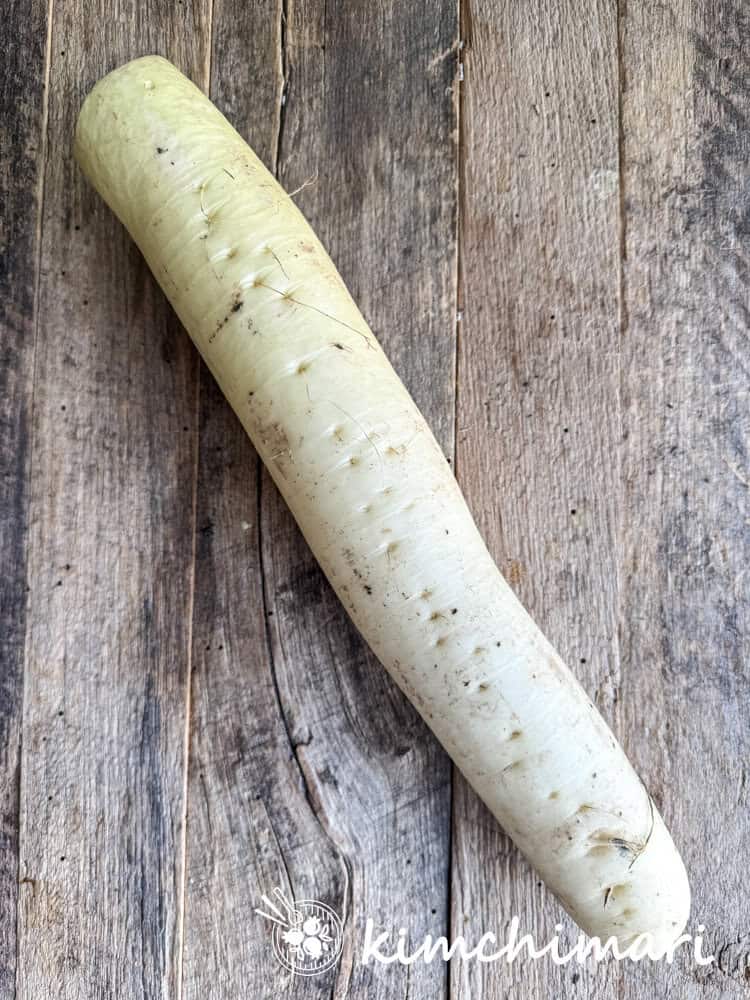
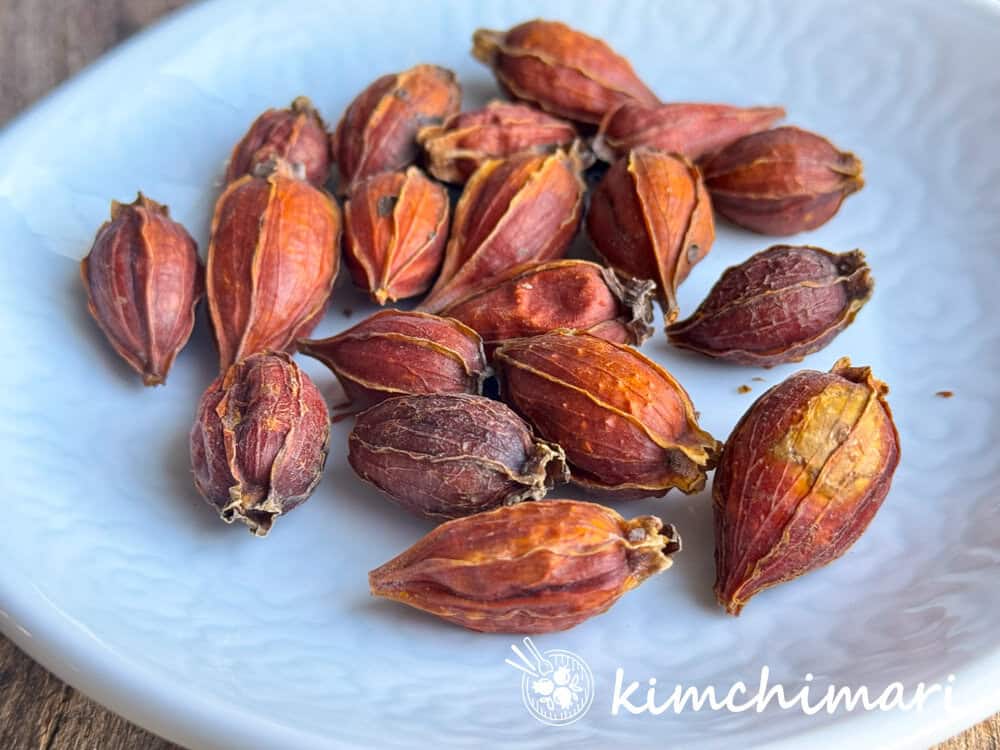
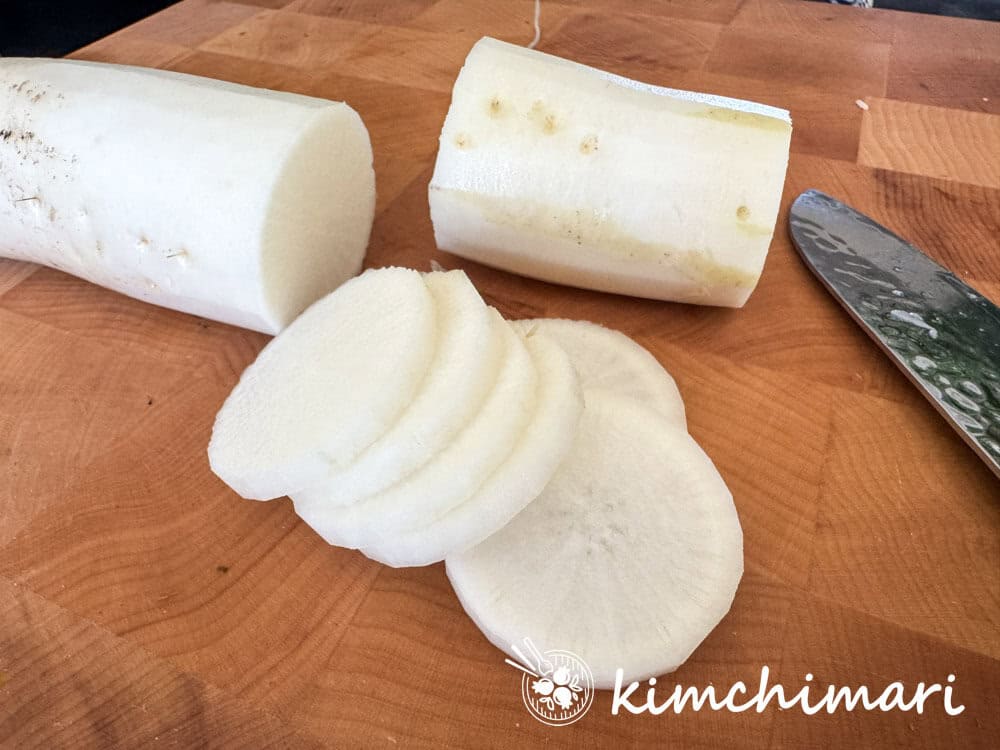

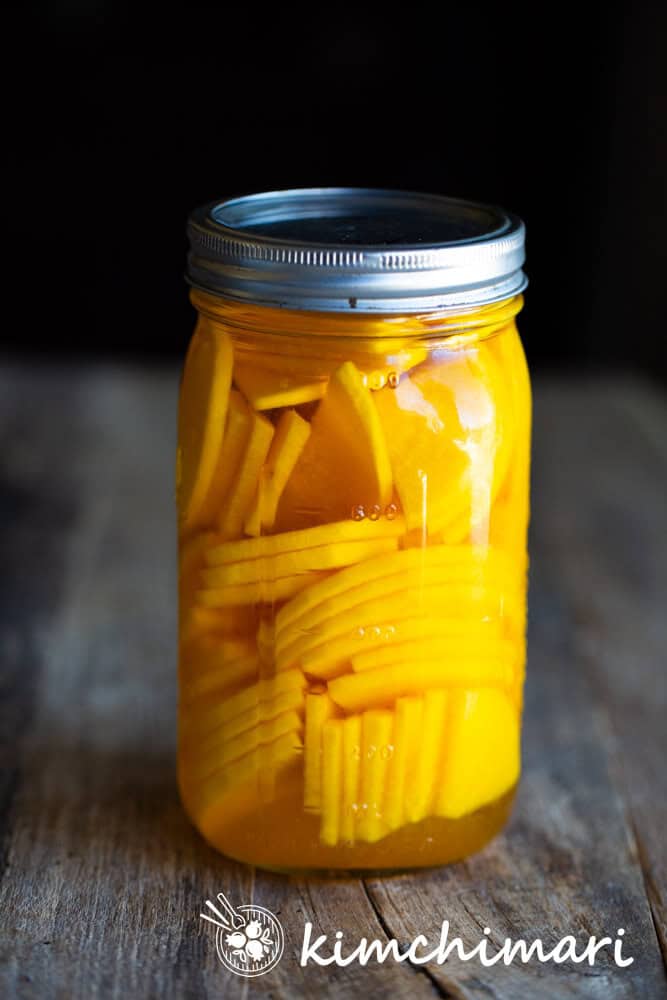

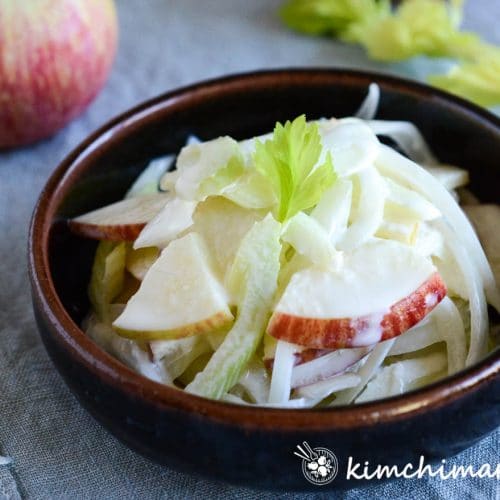

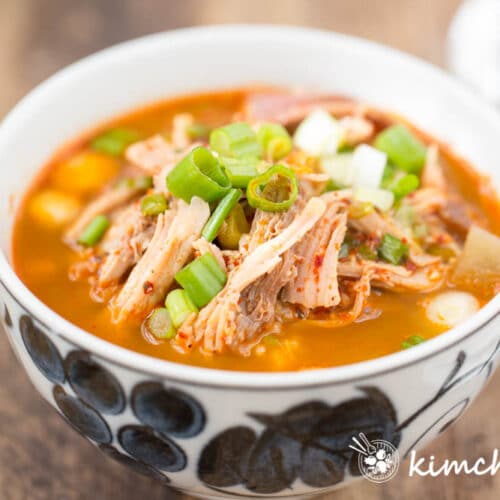
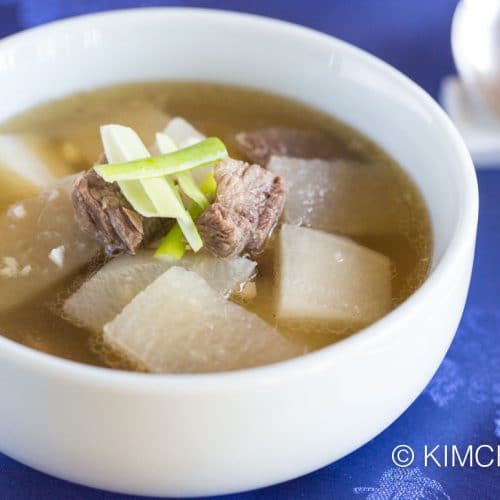
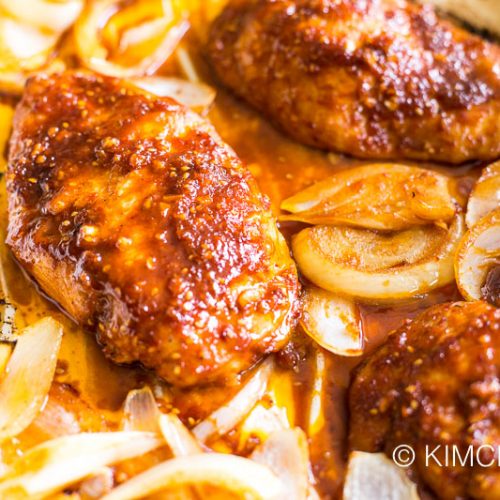

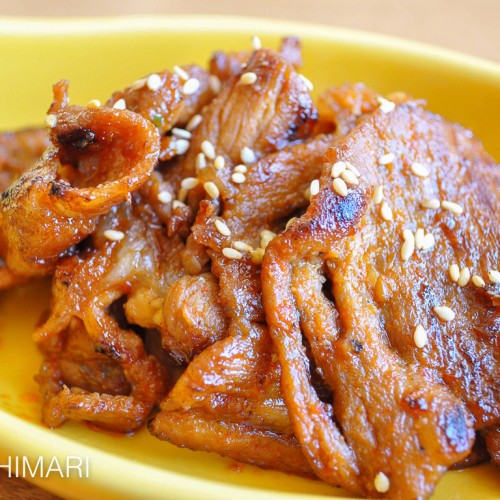
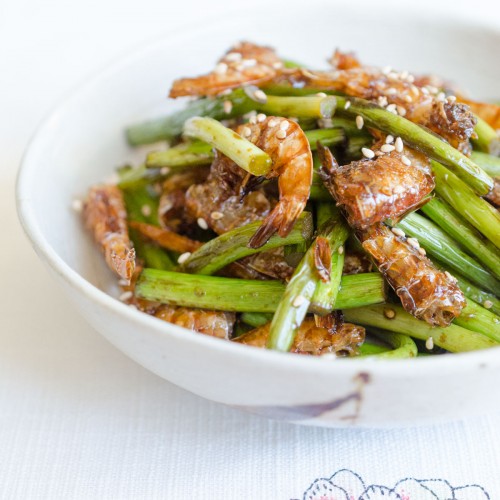
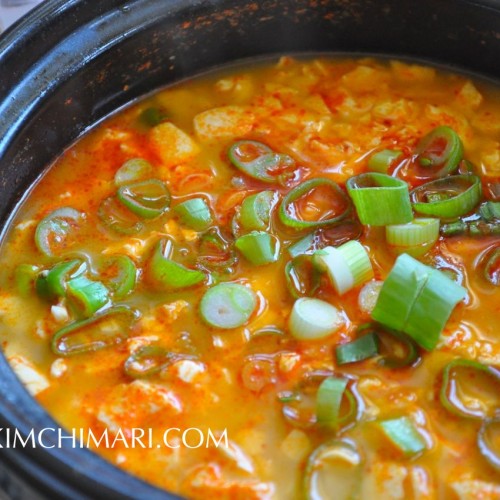


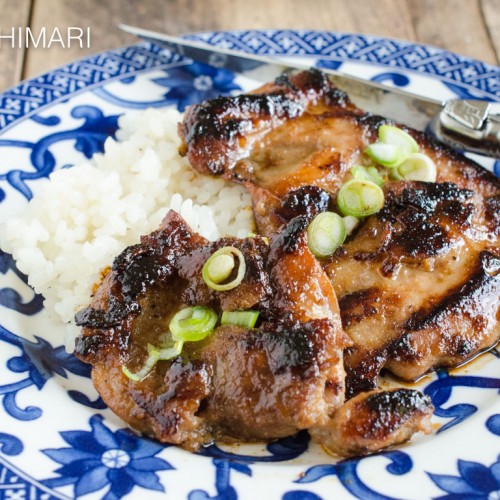
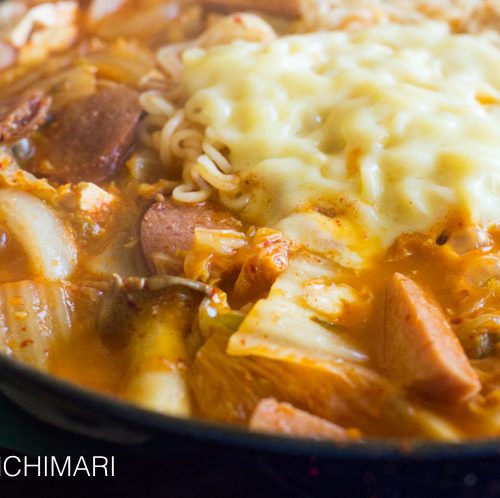
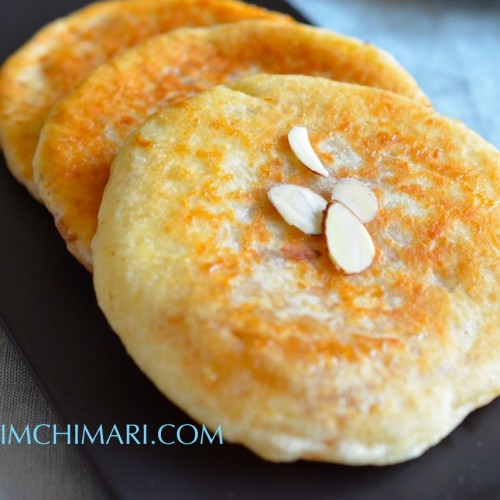






I’m so looking forward to making these. I will be using them for SANJEOK.
Thank you for adding in the best substitutions as I don’t have access to a Korean Market near me, so I will be using the Turmeric.
Oh what a great idea!! I hope it turns out well for you – thank you so much for the 5 stars!!
So yummy! Beautiful, too. I love these so much I made another batch with assorted veg, black peppercorns, and red pepper flakes. One for kimbap and one for ssams. Now, if we could stop munching on them as is! A recipe to keep.
Wonderful!! You are my first comment since I posted this recipe so this makes me extra happy – thank you so much. I had a version that was a little sweeter and sour but I love the lightness of this recipe.